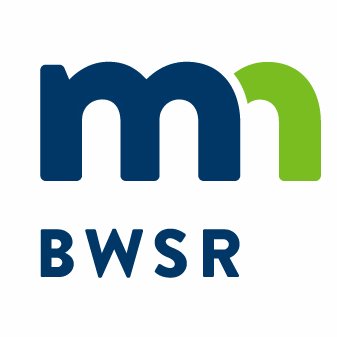Contact: Celi Haga, 651-315-5082 (c)
St. Paul, Minn.— Minnesota’s local governments - counties, cities, watershed districts, conservation districts, and more - work every day on behalf of our state’s natural resources. On Wednesday, August 27, Minnesota Board of Water and Soil Resources (BWSR) board members will take part in an annual tour that showcases how those efforts are making a difference in local communities. Stormwater re-use, ravine stabilizations, and wetland restorations are a few of the project highlights featured as part of the tour, centered in the Twin Cities north metro.
Board members spend time every year in the field, taking a close look at the local conservation delivery system in action. This year’s tour focuses on projects within the Rice Creek Watershed District, Coon Creek Watershed District, and Anoka Conservation District.
“The annual board tour gives us a chance to shine a light on the important work being done by our local government partners,” BWSR Executive Director John Jaschke said. “Healthy soil and clean water are important to all Minnesotans, and these projects are helping protect and restore those natural resources.”
The Board will begin its tour in Vadnais Heights. Stops along the way include:
- Oneka Ridge Golf Course: With support from the Clean Water Fund, this project will collect stormwater runoff from nearly 1,000 acres of land upstream of Bald Eagle Lake and use it to irrigate 116 acres in the golf course. Initial estimates show that 32.5 million gallons of stormwater runoff (or more) could be intercepted and treated annually through the system, saving groundwater and keeping 75 pounds of phosphorus out of Bald Eagle Lake every year.
- Brown’s Preserve Drainage and Wetland Restoration Project: Anoka-Washington’s Judicial Ditch #4 was deteriorated to the point it no longer provided enough drainage to meet agricultural and municipal needs. The watershed district purchased the 80-acre Houle Wildlife Management Area from the Minnesota Department of Natural Resources in 2012 and rerouted the ditch, previously running through the middle of Brown’s Preserve. This project restored drainage to the area and improved the quality of wetlands on the property.
- Rum River Regional Park Stabilization: Riverbank erosion was first identified as a problem in Rum River Central Regional Park in 1999. Funding was leveraged from numerous sources to install multiple conservation practices on three different sites. The project ultimately stabilized 1,250 feet of riverbank, protecting public safety and natural resources in the process. The conservation district estimates that the project keeps 274 tons of sediment and 370 pounds of phosphorus out of the river on an annual basis.
- Oak Glen Creek Stabilization Project: Recurring bank failures along the Oak Glen Creek Corridor ravine led landowners to contact the City of Fridley for help addressing rapid erosion. From December 2013 to July 2013, the district installed conservation practices such as rock check dams, vegetated riprap, and brush bundles on 21 private properties to stabilize 1,400 feet of ravine along the corridor. In doing so, this not only protected those properties from further damage, but reduced sediment discharge to the Mississippi River by 317 tons per year and phosphorus by 507 pounds a year.
- Northdale Middle School Pond Modification: In September 2010, an existing stormwater treatment pond was raised by 18 inches to provide water quality benefits to Sand Creek. One of the most cost-effective methods of treating stormwater, the changes to the pond decreased the amount of runoff, reducing erosion and flooding. Sand Creek will also receive less sediment – to the tune of over 6 tons a year – and less phosphorus – 20 pounds a year – resulting in cleaner, clearer water.
Following the tour, a panel discussion will be held at White Bear City Hall to discuss groundwater management in the northeast metro. Panelists include Rep. Peter Fischer, Minnesota House District 43A; Perry Jones, United States Geological Survey; and Paul Putzier, Minnesota DNR.
For a full itinerary of the BWSR Board tour and the regularly-scheduled BWSR Board meeting on Thursday, August 28, visit the BWSR website at: www.bwsr.state.mn.us.
The 20-member BWSR Board includes representatives of state agencies, local governments and citizens. The projects featured during their annual tour illustrate how successful partnerships between federal, state, and local governments and private landowners are making a difference for Minnesota’s soil and water.

